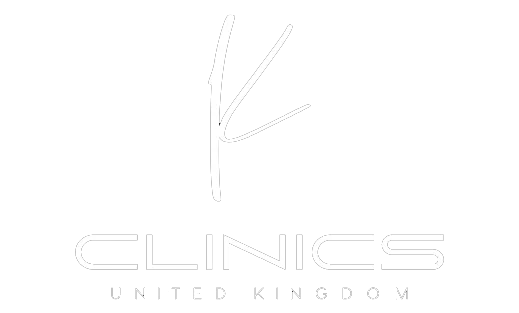Braces or Aligners: How to Choose the Ideal Teeth Straightening System?

Straight, beautiful teeth are not just about aesthetics — they play an important role in overall oral health and well-being. Many problems, including uneven enamel wear, cavities, trouble eating and even jaw joint discomfort, can result from a misaligned bite or crooked teeth. Braces and aligners are the two main working techniques for straightening teeth in modern orthodontics.
Which technique is the best fit for the patient determines the seriousness of the issue, the patient’s age, lifestyle and also personal preferences. Each therapy has distinct qualities. In this article, we’ll go over when aligners are a more practical option and when braces are the superior option.
Why Is It Important to Correct Your Bite and Straighten Your Teeth?
Misaligned teeth and bite irregularities can cause various problems, including:
- Increased risk of cavities and gum disease: Overcrowded or widely spaced teeth are harder to clean, leading to plaque buildup and bacterial growth.
- Premature tooth wear: Uneven wear from misaligned teeth can result in enamel damage, tooth wear and pain.
- Digestive problems : Misaligned teeth can make it difficult to chew food properly, which reduces the effectiveness of digestion.
Jaw and headache pain: Misaligned teeth can cause pain by putting tension on the jaw’s muscles and joints.
- Speech difficulties: Pronunciation can be impacted by certain biting problems, which is especially crucial for young people and communication specialists.
Therefore, getting orthodontic treatment is not about a perfect smile, it is more about preserving general dental health.
Braces: When Are They Necessary?
What Are Braces?
Braces are a fixed orthodontic system consisting of brackets attached to the teeth and an archwire that gradually shifts them into the correct position.
When Do You Need Braces?
- Severe biting problems, such as crossbite or open bite.
- Excessive crowding or misalignment of teeth.
- Significant spaces between teeth that require closure.
- Rotated teeth or teeth angled incorrectly.
- Asymmetry in the face brought on by misaligned jaws or teeth.
- Cases requiring surgical orthodontic treatment for extensive corrections.
Main Types of Braces
🔹 Metal braces are the most economical, strong, and noticeable option.
🔹 Ceramic braces are less obvious and are made to mimic the color of your teeth.
🔹 Sapphire Braces: More costly than metal ones, yet transparent and aesthetically pleasing.
🔹 Lingual braces are applied to the inside of the teeth, where they are totally undetectable.
Benefits of Braces
✔ Capable of fixing even the most intricate alignment and biting problems.
✔ Fixed in place, ensuring continuous correction without patient intervention.
✔ Provide long-lasting, stable results.
Disadvantages of Braces
❌ Visible on teeth, even with ceramic and sapphire options.
❌Need a lot of dental care, such as specialized brushes, flossers, and mouth irrigators.
❌ May result in cheek and gum irritation and discomfort.
❌ Food restrictions: Steer clear of foods that are extremely rough, sticky, or hard.
⏳ Treatment Time: Depending on the intricacy of the situation, 1.5–3 years.
Aligners: When Are They the Better Choice?
What Are Aligners?
Aligners are transparent, removable trays that are custom-made for each patient to gradually shift teeth into their ideal position.
When Are Aligners Suitable?
- Bite problems range from mild to major.
- Minor dental misalignment that needs little adjustment.
- Tiny spaces between teeth that must be filled.
- A little overlap of teeth is a sign of mild crowding.
- People who desire a painless, discrete orthodontic treatment.
Advantages of Aligners
✔ Nearly undetectable: Clear trays are barely perceptible.
✔ Comfortable: No sensitive tissues or gums are irritated.
✔ Detachable: You may remove it before brushing or eating.
✔ There are no dietary limitations, so you can eat everything you want.
✔ Simple upkeep: There is no intricate cleaning schedule.
Disadvantages of Aligners
❌ Not effective for severe orthodontic problems.
❌ Must be worn at least 20-22 hours per day for effective results.
❌ demands a great deal of self-control because the patient wears the trays.
⏳ Duration of Treatment: 6–24 months.
Braces vs. Aligners: Comparison Table
Feature | Braces | Aligners |
Visibility | Noticeable on teeth | Nearly invisible |
Comfort | May cause discomfort | Light and comfortable |
Eating restrictions | Yes | No |
Wear time | Fixed in place | 20-22 hours per day |
Care routine | More complex | Simple |
Treatment duration | 1.5-3 years | 6-24 months |
Suitable for severe cases | Yes | No |
Cost | More affordable | More expensive |
How to Make the Right Choice?
A final decision should be made in consultation with an orthodontist, who will evaluate your particular case and suggest the best course of action. Braces are the best option if you have complex orthodontic problems (severe misalignment, significant bite issues). Aligners are the ideal option if you need to discreetly and comfortably fix minor alignment issues.
Schedule a consultation at KClinics today and our orthodontist will help you choose the ideal system for your perfect smile!



